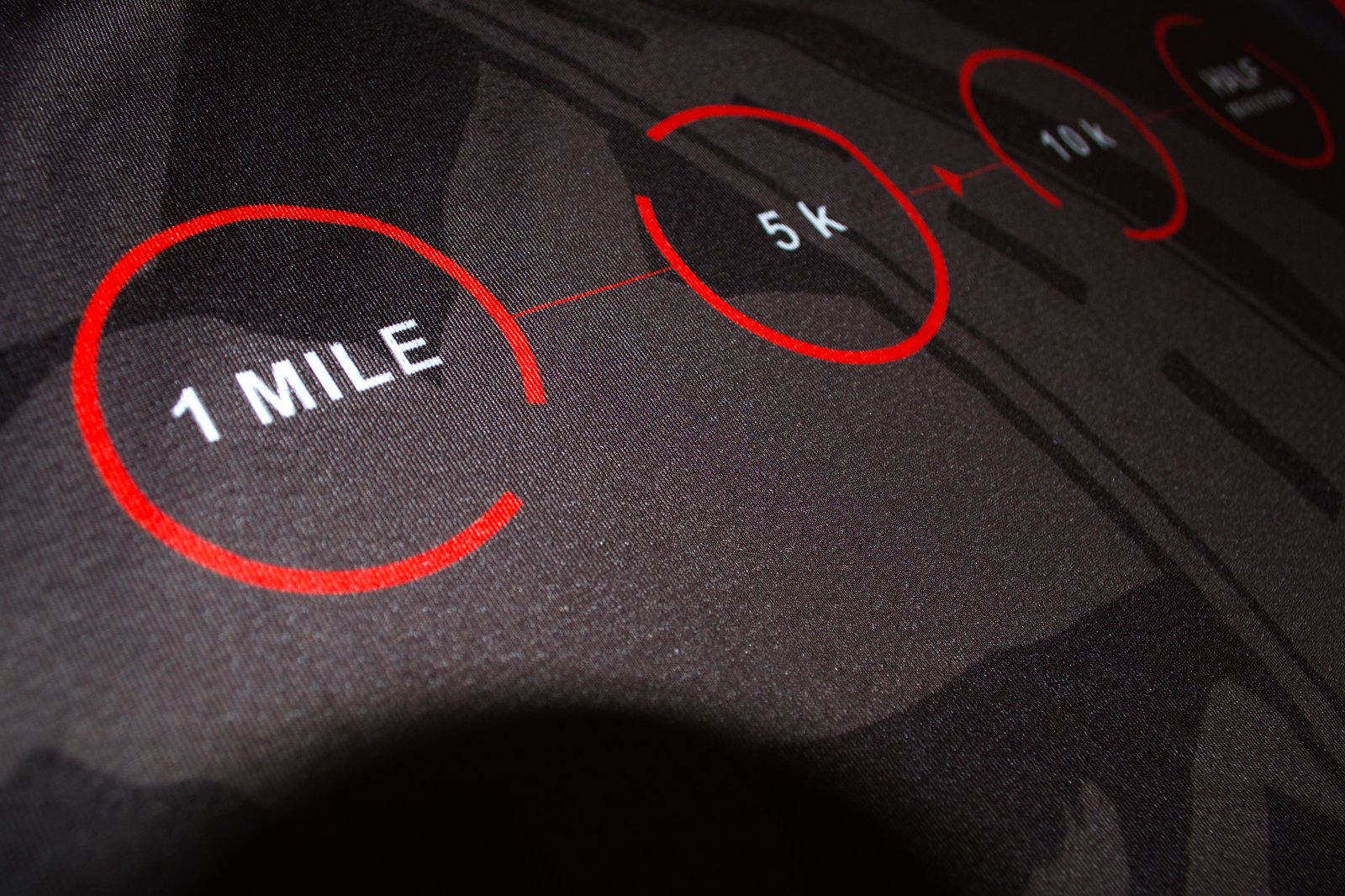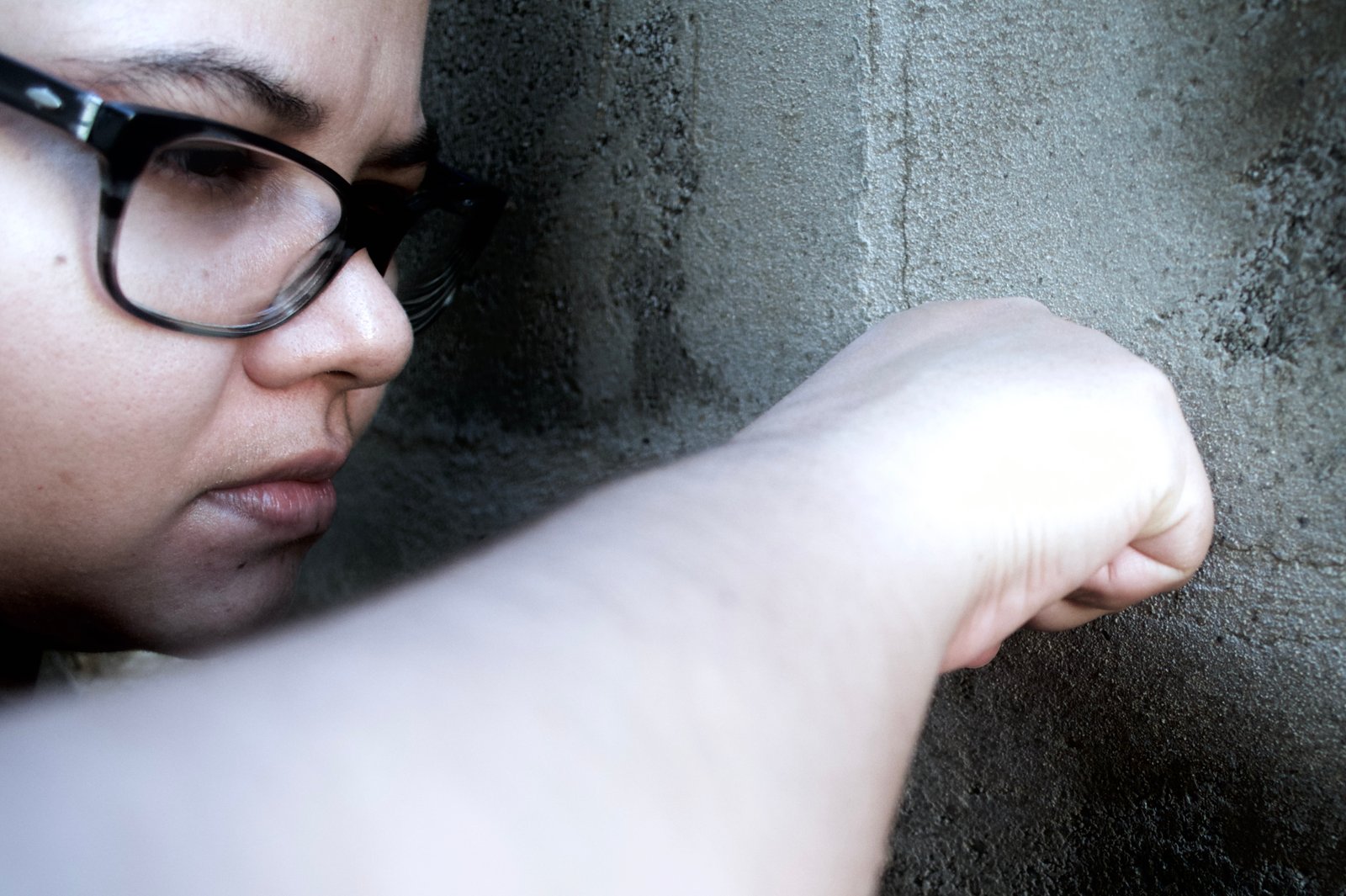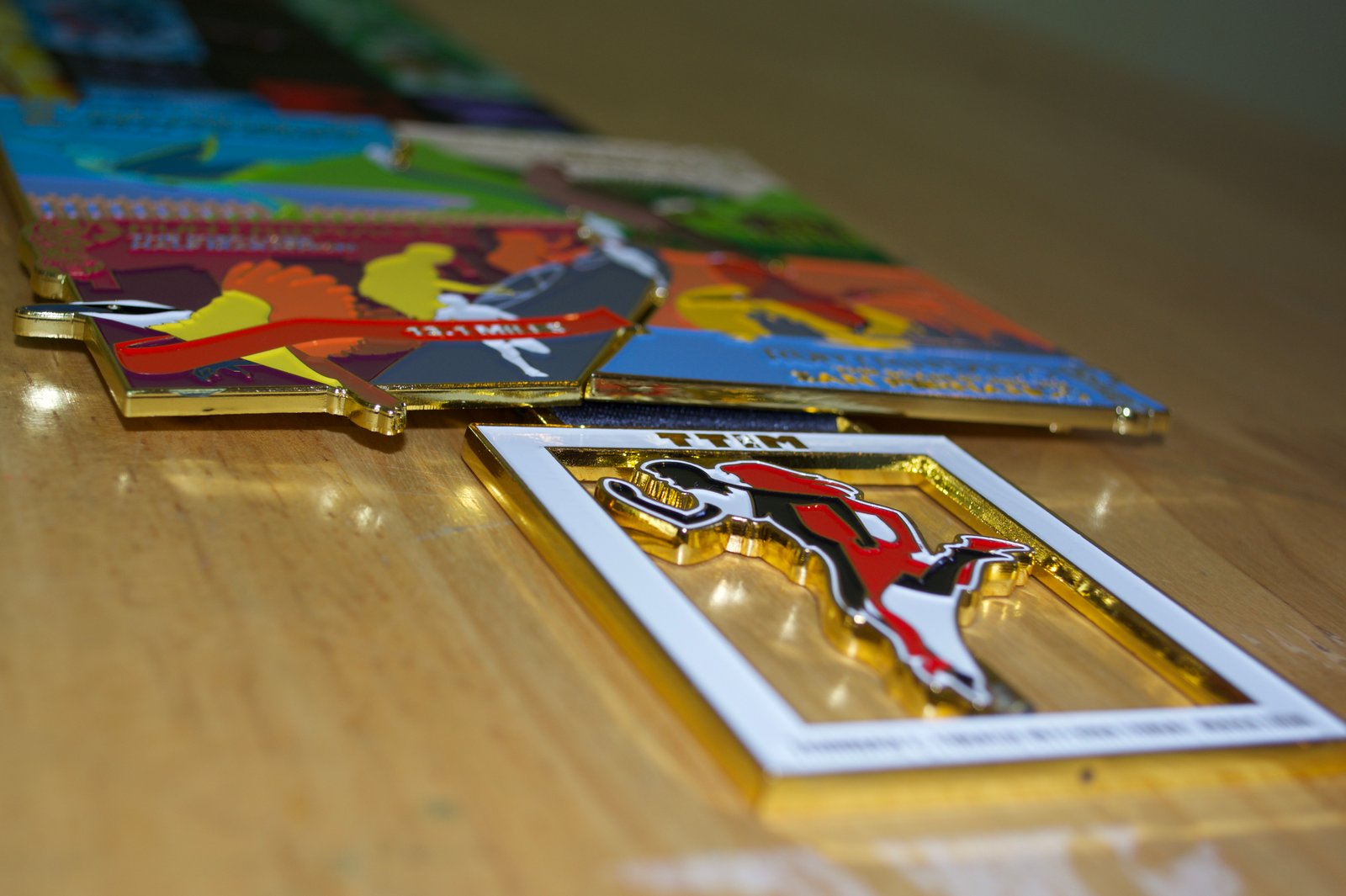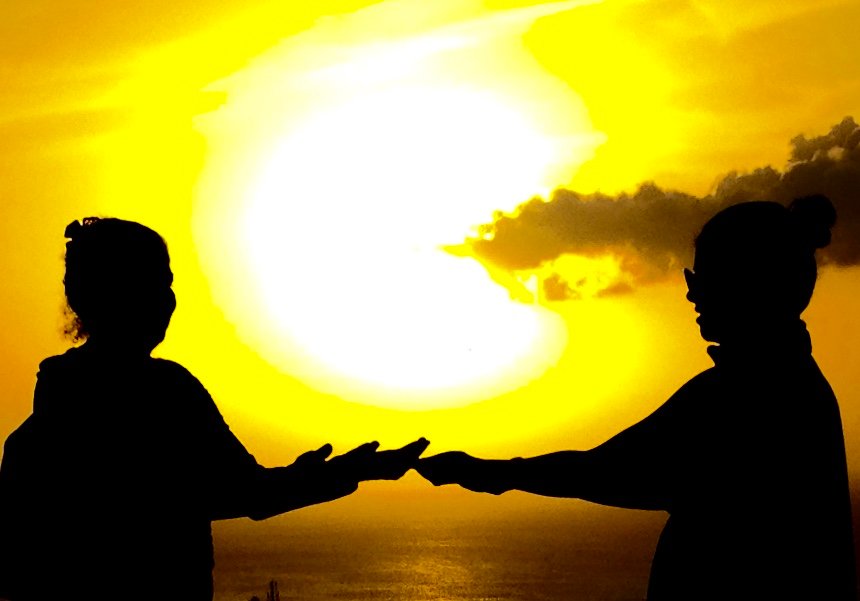Grow!

“I have fought the good fight, I have finished the race, I have kept the faith.”
~Timothy 2 4:7
This January, I entered the 38th running of the Trinidad and Tobago International Marathon (TTIM). The early start race began 3.30 am at St. Mary’s Junction Freeport, and ended at the finish line in front Whitehall, Port-of-Spain. It was my first marathon—26.2 miles; a distance roughly equal to lapping Queens Park Savannah 12 times, or the inner perimeter of UWI’s, St. Augustine campus 18 times. My 2019 Run Trinbago journey prepared me for this moment. I piggybacked off my training for all four races that began at the Hummingbird Mile and ended at the Kiskadee Half-Marathon.
I won’t lie. The marathon wasn’t easy. I was prepared for the first 17 miles from the start line to Curepe, but it was the remaining distance that tested me. This was where the psychological battle with myself began. After five hours of being on the road, I began questioning why I was putting myself through this pain. My feet ached, my fingers were swollen to twice their size, and I wanted to give up so badly. Aaron was with me through it all. I believe his unwavering support and encouraging words helped me every time I felt the fibers of my willpower begin to unravel. Wherever passers-by cheered us on, he said,
“You hear that babe! They’re cheering for you! You’re doing so good!”
When we were close to Carib Brewery Ltd. in Champs Fleurs, I told Aaron that I wanted to cry so badly. I tried, but no tears came. Maybe it was physically impossible to cry due to the exhaustion and physical strain my body was put under, or maybe it was my mind’s way of refusing to show weakness.
I’ve read that a marathon is a “10K with a 20 mile-warm-up”. I believe this. The last 10 kilometres, or 6.2 miles were torture. A giant blister developed under the ball of my right foot, which forced me to stop and rest periodically. Every time I stopped to rest, I felt my legs trembling from fatigue. I couldn’t rest for longer than a minute for fear my legs would crumple beneath me, or refuse to carry me any further. It was my worst fear: my body shutting down before crossing the finish line and all those months of training and self-sacrifice gone to waste. I mustered up the willpower to keep my fear at bay, and focused on putting one foot in front the other, while grinding the pain of my right foot being rubbed raw.
The morning sun was already so hot, and beating down on us. When I looked ahead, all I saw was the empty stretch of the Priority Bus Route road cutting through Laventille. There seemed to be no end in the horizon. The few scattered participants in the distance moved at a crawling pace. On this stretch of road I zoned out and entered the Power save mode. My legs felt heavy; like I was struggling to lift deadweight limbs with each step I took. My lower back ached, and at the same time felt disconnected from the rest of my body. I let my arms, together with their attached swollen hands swing limply at my sides.
Desperate to keep myself moving forward, I bargained with myself—Come on Nadine, you see that [target] in the distance? Just reach it. And when I did, I would focus on another target to reach. On this Laventille stretch I managed to grasp my second wind when I realized people were cheating. How could people whom I passed earlier on the journey be miles ahead of me, if they never passed me again? These people were spinning the moral compass. Tired as I was, anger consumed me. It felt so unfair. How could people do this and still accept a medal? I would feel so horrible if I did. I used the anger I felt towards these individuals to feed my will. They became my new targets; my distraction from the pain and fatigue I was feeling. Somehow I ended up overtaking these individuals again, even though I didn’t feel like I was going any faster. I just kept fighting to put one foot in front the other, more determined than ever to finish. The thoughts of me wanting to give up earlier were now forgotten.
Aaron and I became separated around the 24 Mile mark along South Quay because he had to “drain the main vein” (his words not mine). We were briefly reunited on Ariapita Avenue, where traffic cones lined the middle of the street all the way to Adam Smith Square. When I made the U-turn around the last cone, I caught sight of a slow-moving Aaron walking from the opposite direction. Over the barrier of cones that separated us, he said,
“Keep going.”
I wanted to wait for him to catch up but I feared if I did, my legs would fail me before the finish line. So I continued without him. He showed up on this journey to make sure I crossed that finish line. There was one more mile to go, and I wasn’t going to disappoint.

At the Queens Royal College roundabout, my mum spotted me and walked beside, cheering me along the “Whitehall stretch”. Higher up I saw my father taking pictures. After eight long hours; one hour longer than I intended to finish, I crossed the finish line. I accepted my medal and sat down to catch myself. My entire body was covered in salt crystals. The tears I tried to cry earlier on finally blurred my eyes when I saw a participant hobble across the finish line. Helping arms shouldered him on both sides, and a medic ran behind with a stretcher. Apparently this man collapsed a few times on the route near the end but refused to give up. I felt a bit choked up because this was my worst fear being played out in front of me, but with a happy end. I at once felt thankful for being able to cross in sound body and mind.
My mum went to support Aaron who was about ten minutes behind me. She returned, telling me he wanted to cross the finish line with me. So I limped back down onto the homeward stretch, held out my hand and when he took it, we dug deep and ran across the finish line together.

A few weeks later, when all the emotions settled, and the physical pain long forgotten, I reflected on the events during my marathon-training journey, and the lessons they taught me.
1. Know your real “WHY”

When I started the Run Trinbago journey last year, my initial reason, or “why” was to lose weight. But as the journey progressed my “why” evolved. I am a stubborn person by nature—I don’t like people telling me what to do, but I respect when they lead by example. My deeper “why” for doing the marathon became me wanting to become a positive living example to my future kids. I want them to be bold enough to live their dreams, no matter how scary or unprepared they may feel. I felt like the only way to get this message across, is to show, not tell.
I believe your “why” for doing something should be meaningful to you, and fulfilling to you once achieved. No one else but you can decide your “why”. When you have a strong, personal reason for doing something, you don’t quit at the first sign of trouble. When you get knocked down in those moments of set-backs, failures and disappointments, your “why” helps you bounce back like a coiled spring.
Completing the marathon was one of the very few things that I’ve followed through with in my life from start to finish. I think it’s because rather than going through the motions, I knew the more important reason why I was putting myself through it. Knowing this was a great motivator to keep going, especially through the times I felt like giving up.
2. Make a plan

Since I had no prior experience with marathon training, I consulted good old Google as my knowledge base. I researched other people’s marathon experiences and advice relating to: training, race pace strategies for each distance, hydration and fuelling strategies, clothing, footwear, injury, rest and recovery. Learning about what to expect was a helpful starting point for making a plan.
Initially, to achieve each fitness goal (one mile, 5K, 10K, half and full marathon), I made a training schedule on a monthly basis to achieve each target distance and expected race pace. However, actually working this plan pointed out the flaws, and adjustments needed to make progress. My plan was never perfect; it was more like a “work in progress” which kept me committed, disciplined, and focused on the end goal.
3. “Be like water”

Of course sometimes the best plans fall to naught, because well, let’s face it: Life happens! But it’s no excuse to quit on your dreams.
My father is a die-hard Bruce Lee fan. I remember as a little girl watching movies with him like Enter the Dragon, and The Green Hornet T.V. series, as well as documentaries he videotaped on martial artist’s life. Even though I was too young to understand, I remember hearing the master’s words, “Be water.”
The entire philosophical quote goes like this,
“Be Water, My Friend.
Empty your mind.
Be formless, shapeless, like water.
You put water into a cup, it becomes the cup.
You put water into a bottle, it becomes the bottle.
You put it into a teapot, it becomes the teapot.
Now water can flow or it can crash.
Be water, my friend.”
-Bruce Lee
I think this entire philosophy speaks about adapting to change. At the beginning of my training, I experienced crippling shin splints, and plantar fasciitis. I managed to power through the pain but after the 5K last May, I knew I had to make some changes to alleviate the pain. I took a two-week break from training, which helped a bit. I incorporated more magnesium into my diet by eating dark chocolate and cashew nuts; started a multi-vitamin supplement; warmed up more before training; wore compression socks; massaged by legs vigorously after each training session; added adequate periods of rest and recovery days; and expanded my training to include tai chi and yoga to improve my flexibility.
However, my running journey was short-lived when I injured my lower back one fine evening in July. One bad step was all it took while running in the grassy UWI track field, for one of my vertebrae to slip out of place. I was instructed by the chiropractor to tie my lower back everyday for the next six months to help with the healing process.
I felt so bummed. For the first time in my training I felt fit. I had tailored my plan to include cross-training to prevent injury, but I guess the universe had other plans for me. My lower back would hurt whenever I was on my feet—simple tasks like doing the dishes was a nightmare. I was so angry, that my new plan became “no plan”, which in retrospect was still a plan. Life forced me to loosen the reins on the intensity of my training, but I never stopped training. Running was no longer an option, so I walked. Instead of wallowing in self-pity, I chose to adapt. With this mind-set I walked the majority of my other races: 10K, half-marathon, and marathon.
I believe that while we cannot always control what happens to us, we can control how we react and move forward. There will always be challenges to face, and obstacles to overcome. And when they come, we must be flexible and adaptable; we must “be like water”.
4. My Magnificent Obsession

When Aaron and I were dating, he called me his “magnificent obsession”; not in a creepy, stalkery way, but as a term of endearment. He adopted these words from bodybuilder and motivator, C.T. Fletcher who quoted,
“You must become obsessed with obtaining what you are trying to get; you have to be obsessed with it.”
The marathon became my magnificent obsession. I believe in the power of visual motivation. When I embarked on the Run Trinbago journey, I listed on a large whiteboard, my four fitness goals for 2019: one mile, 5K, 10K and half-marathon. It was only midway through the year did I add the marathon to my list followed by a question mark. I placed this whiteboard in the kitchen for my eyes to be drawn to it, day in, and day out.

Later on, I kept two maps of the marathon route; one on my closet door so that it was the first thing I saw when I awoke, and the last thing when I went to bed at night; and one in my cubicle at work. I also changed my mobile screen saver to a picture of Whitehall—the finish line of the TTIM. I started visualizing myself crossing that finish line months in advance.
I’ve read that the bite style of a Pit bull is such that, once they grab hold of their target, they refuse to let go. Even after being kicked, beaten, stabbed, tased, pepper sprayed and shot, they still refuse to let go. When we want to achieve something, we should be like the Pit bull and refuse to let go of our goals and dreams. We should be hungry enough to see it through, and no matter what hurdles life throws at us, we should keep our jaws locked on our target.
5. Bad mind!

In marathon training, the term “hitting the wall” refers to “the point at which your body runs out of energy”. Just like a car operates on fuel, so too does the human body. When this fuel runs out, there is a sudden drop in performance. And that’s a scary thing to experience during a race. With proper training and a good fuelling strategy it is possible to avoid this. But sometimes, despite our best efforts, it still happens.
I’ve heard many stories about people who caught muscle cramps during physical activity. I did not want to be one of these people. So as part of my race prep for the longer distances like the half and full marathon, I kept on me a supply of salt prunes, chocolate and glucose water.
In the half-marathon, I thought I “hit the wall” in the last 3 miles. I felt so sick. My body felt like Ian Fleming’s description of a horse, “dangerous at both ends and uncomfortable in the middle!” Luckily, I didn’t throw up, or otherwise. I had tied my lower back too tightly, which cut off the circulation to the lower half of my body. It was only when I removed it in the last mile, I felt better. Lesson learnt.
The incident scared me so much, that I didn’t risk tying my back for the marathon. But even without it, I did “hit the wall” around the 20 mile mark, despite my fuelling strategy of drinking glucose water after each mile. All the literature I read did not prepare me for the actual feeling. My body literally felt like it was shutting down. This was the point at which my body entered the Power save mode. What got me through was the power of my mind, and a chocolate bar (thank goodness I listened to my mum!)
“Hitting the wall” does not only occur physically, but mentally, and emotionally as well. After the 5K last May, Aaron fell ill suddenly. I used the majority of my sick days at work to drive him to the hospital for his check-ups, and to care for him at home because he was placed on some strong medication. Hallucination was a major side effect. I didn’t think it wise to leave him alone at home, after he awoke with terror in his eyes yelling, “The kitchen is on fire!” It wasn’t. In fact the stove wasn’t even on! I was literally standing in the kitchen watching him, trying to calm him down. It was a stressful time for me, but my training kept me sane.
I felt so angry at the world while Aaron was unwell. I was angry that bad things happen to good people for no reason, and so I closed myself off from the world. I didn’t care to be nice to anyone. I was just so angry, and I couldn’t shake it off. So I used this anger to fuel my training. Life was trying to break us, and I wasn’t giving up without a fight. I bounced back to my usual self eventually when Aaron got better, but then I injured my lower back. This was the point when I felt like I had emotionally “hit the wall”. Another set-back. All my fight, all my effort felt wasted.
How did I cope?
I took a step back. I breathe. Took a break. Then started again.
This was hard, but it made me realize how capable I was. The injury forced me to slow down, but I didn’t give up. It made me understand that mental conditioning is just as important as physical preparation to achieve any goal. There’s an expression Aaron learnt from his coach during his days at Dragon-boat training. It is called “bad mind”; loosely interpreted as “the will to see something through, especially when the odds are against you”.
Set-backs are opportunities to tap into the hidden strength reserves inside ourselves to pull us through. We all have that will; that “bad mind” to keep us moving forward, even when we don’t have all the answers, or know the outcome. As Dean Kamazes says,
“Run when you can, walk when you have to, crawl if you must, just never give up.”
6. Enjoy the little wins

When I started training for the one mile, I remember struggling to run one side of the UWI Rugby field. My fitness sucked. I would alternately run one side and walk the other just to complete its perimeter. I felt fat, slow, and totally out of shape. I felt hopeless. My mind taunted me, “Why bother? You’re a laughing stock.” But somewhere deep down I knew this was not going to last forever. I felt like if I just stuck with it long enough, I would get better and feel better.
By the time the 5K rolled along in May, my fitness slowly improved. I was able to run both the UWI Rugby field, and track field. I even ran both in one shot. I took up hill training up Tucker Valley and Mt. St. Benedict with my parents and Aaron, and I was able to run an entire lap non-stop around Queens Park Savannah in 30 minutes. I felt so proud. It felt like progress.
In my training leading up to the UWI half-marathon in October, I was able to complete the Tucker Valley hill three times in one training session with my parents. After completing the third, my mum and I ran the entire flat distance of Bamboo Cathedral, all the way back to the Macqueripe car park. I felt my fittest for the year. And I was so happy to be able to still run even after my back injury.
After I completed the half-marathon, I felt a bit emotional when I passed by the UWI Rugby field. This was where my training began. When I started, I had no idea what to expect. The questions that nagged me then were,
“Can I do it?”
“Do I have what it takes to do a half-marathon?”
Looking back on where I started and how far I came was humbling, and a bit overwhelming. It encouraged my next reaching question,
“Can I do a marathon?”
Milestones are important, but I believe in celebrating the small wins too. It’s the small successes that spur you on; keep you motivated; encourage you to keep stretching to achieve the bigger goals. Be proud of them because they are yours, and they make the journey worthwhile.
7. Cherish your support system

In 2012, my mum entered the Trinidad and Tobago International marathon for the first time at age forty-eight, and completed it in six and a half hours. This is an amazing achievement, but the memory I hold is that I never took the time to meet her at the finish line, because I was too busy working on my undergrad assignments. At that time I had no idea what a marathon was, or even understood the magnitude of such an achievement. I just assumed that I would be there for her the next time, but there wasn’t. And I regret it.
Regret is a powerful feeling, and a good motivator. Which is why if you get a second chance, you should make the most of it. Fast forward eight years, having my mum show up for me when I took part in the marathon felt like I received that second chance. Having the support of Aaron, and my dad also made it more special.
Although nobody’s got your back better than you do, I believe that we still need the support of others. Whether it is one person, or a team, don’t take the ones who support and encourage you for granted. You never know if there’ll be a next time.
8. Edit the unnecessary

Sometime after completing the half-marathon last October, I was attacked by a colony of Pharaoh ants that infested my entire wardrobe. I was forced to move all my possessions out of the room to deal with the problem. A friend recommended Terro liquid ant bait. Even though it proved effective, I still felt like the situation came at a bad time. I was overwhelmed because so much was already going on. My life felt like it was falling apart, and at one point I thought I was close to losing everything. To regain some sense of control, I started de-cluttering. I started small like unsubscribing from emails, donating things I never used or needed, getting a handle on my arch nemesis: paper clutter, and paring down my to-do lists. It sounds weird, but simplifying created a ripple effect in other areas of my life. By removing the distractions, I felt like I had more time, and mental energy to devote to my priorities. This also made the transition to longer training sessions a lot easier.
Overall, I felt calmer. I began living more intentionally, and enjoying the simple things in the world around me. I saw shooting stars for the first time on a camping trip at Bioblitz in Tabaquite; watched a red-coloured moon rise from the depths of a dark ocean over Mayaro; and observed that orange-winged parrots do multiple 360 degree flights using their loud, high-pitched screams to rally their flock for breakfast.
The ants disrupted my life for the better. They taught me that cutting the unnecessary out of your life, gives you the time to focus on what is really important.
9. Size matters…for comfort

When it comes to marathon training, comfort should be a priority. I’ve noticed a lot of people either lose or injure their toenails after going the distance. Wearing the appropriate footwear two sizes bigger can prevent these battle-scars. I learnt this by happy accident. I usually size up by 1, which worked well for the half-marathon. However, when my window to break in a new pair of sneakers for the marathon was closing, I was left with little choice but to take the available pair closest to what I wanted. Sizing up by 2 catered perfectly for my gel in-soles, compression socks and thick cotton socks, while still leaving wiggle room for my toes after heat and swelling.
Vaseline is also your best friend! It’s a cheap, anti-friction remedy that can save you a lot of pain. I actually forgot to apply some to the soles of my feet like I usually do, which resulted in me developing a giant blister, and taking an extra hour to finish the marathon.
My mum often says, “Don’t try anything new on race day!” The routine you follow for your training sessions should be the same routine you follow for the big race day. This includes what you eat, drink and wear. Never stray from what you are accustomed doing, no matter how tempting because on race-day there are no do-overs.
10. Run your own race
When the early start race began 3.30 am at St. Mary’s Junction Freeport, Aaron and I were the last two participants behind the crowd. Did it bother me? No. The younger me might have cringed, but the present me understood that I was on a mission to prove to myself that I can go the distance—26.2 miles. I ignored what everyone else was doing. I chose to move at my own pace, even if it meant being the last person to cross the finish line. I am proud of my accomplishment. If I were to compare my success to that of others, I would be sad and miserable.
The road of life is in a way, just like a marathon. We’re all working towards crossing that finish line. On this journey, the only person you should be in competition with is yourself. Forget what everyone else is doing and focus on your own goals and dreams. Go at your own pace and you’ll get there. In the end, it’s your journey; your experience; your growth!


Love this story . Very descriptive and well written. Brought back memories when I was a track athlete. So sorry about your struggles but am so proud you overcome each hurdle in your life. Keep strong,live ,love and laugh. Best wishes to you both and your loved ones.
Nadine, you are quite the stoic, your words remind of the short videos I’ve been seeing about stoicism. You’ve been through a lot, you fought and won.